By Vivek Paudel
“Makerspaces like Maker’s Edge have great promise for the 21st-century economy.” – Jessica Attas, Greater Waco Chamber of Commerce.
A hidden diamond in a coal mine can only get its worth if people who know the value of a diamond reach to it.
Located at 1800 Austin Ave, The Maker’s Edge is, to me, one of Waco’s hidden diamonds. Maker’s Edge is Waco’s “makerspace.” If you are not familiar with the concept of a makerspace, it’s like a big community workshop for making things.
 Maker’s Edge provides a space for creation, customization, innovation, and experimentation in our community. It’s a place where people from nine to ninety-nine go to make their imaginations real. Whether you are an artist who wants to do some customization on a personal item or a student who needs to build a science project, Maker’s Edge provides all sorts of guidance and an expansive variety of equipment.
Maker’s Edge provides a space for creation, customization, innovation, and experimentation in our community. It’s a place where people from nine to ninety-nine go to make their imaginations real. Whether you are an artist who wants to do some customization on a personal item or a student who needs to build a science project, Maker’s Edge provides all sorts of guidance and an expansive variety of equipment.
 This is no small room with a few LEGO sets and a 3D printer. Maker’s Edge provides a full shop experience with more machines and space than many might realize is available here in town. Equipment available includes a CNC Router, 3D printers, plasma cutter, drill press and much more that makers can use for purposes from customizing a cell phone case to building a prototype of a new product.
This is no small room with a few LEGO sets and a 3D printer. Maker’s Edge provides a full shop experience with more machines and space than many might realize is available here in town. Equipment available includes a CNC Router, 3D printers, plasma cutter, drill press and much more that makers can use for purposes from customizing a cell phone case to building a prototype of a new product.
Melissa Pardun, the owner of Maker’s Edge, calls it the “democratization of heavy machines.” Through Maker’s Edge, and other makerspaces, anyone can use expensive tools that otherwise they would not be able to afford. Anyone can make a prototype of the idea they have been carrying around in their head. This opens up the possibility of making tons of money as well as benefit to the community.
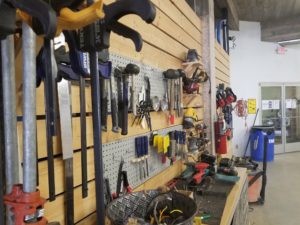 Not only does Maker’s Edge make the machines available to customize items and build prototypes, it also provides a place to connect with others and share ideas. For example, if different people take advantage of this space to customize their stuffs — which can include anything from improving the look of their cell phone case to building a bookshelf — this will not only increase the creativity of those people, but can simultaneously help in exploration of new ideas for customizing.
Not only does Maker’s Edge make the machines available to customize items and build prototypes, it also provides a place to connect with others and share ideas. For example, if different people take advantage of this space to customize their stuffs — which can include anything from improving the look of their cell phone case to building a bookshelf — this will not only increase the creativity of those people, but can simultaneously help in exploration of new ideas for customizing.
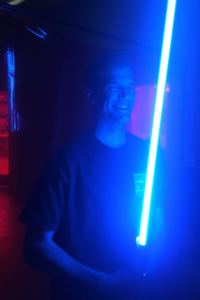 All these options and machines may seem overwhelming. But, I encourage anyone who has something in their mind to head over to Maker’s Edge and create it. The people at Maker’s Edge will provide the guidance and help to help you create your prototype. I have seen people create remarkable objects from lightsabers from Star Wars, to Harry Potter wands and much more. When people participate and work on a project, that builds up and improves creativity. At Maker’s Edge people are able to polish their arts and imaginative skills. The people at Maker’s Edge provide a helping hand and help in cases of failure because they believe in learning through failing. When people carry that perspective into the workshop, great results will follow.
All these options and machines may seem overwhelming. But, I encourage anyone who has something in their mind to head over to Maker’s Edge and create it. The people at Maker’s Edge will provide the guidance and help to help you create your prototype. I have seen people create remarkable objects from lightsabers from Star Wars, to Harry Potter wands and much more. When people participate and work on a project, that builds up and improves creativity. At Maker’s Edge people are able to polish their arts and imaginative skills. The people at Maker’s Edge provide a helping hand and help in cases of failure because they believe in learning through failing. When people carry that perspective into the workshop, great results will follow.
It’s even a stress reliever. Taking a pottery class at Maker’s Edge and getting your hands into some clay and mud is a great way to relieve the daily stress. Getting involved in a class can also help you meet new people; some nice small talk with a new person can be a good stress reducer too. If you are dealing with anger, use that anger and put it into building something that will be productive. If nothing else, Maker’s Edge is a place where slamming a hammer on a wooden plank is considered a productive task!
Maker’s Edge is a treasure chest for Waco, and more Wacoans need to know about it and take advantage. We, as a part of community, need to invest our time in understanding about them and utilizing the things they have been providing. They provide free classes where anyone can test it out without risking finances. An engine of creativity like Maker’s Edge should be booming in the center of our community rather than being at the unfamiliar edge.
 Vivek Paudel is a student at MCC pursuing an Associate in Arts for Digital Media. He is an expert when it comes to eating and travelling, and he listens to rock music whenever he feels low. He loves to write stories that are posted on his blogspot account. He likes to interact with people about different stuff, and he knows how to fill those awkward silences.
Vivek Paudel is a student at MCC pursuing an Associate in Arts for Digital Media. He is an expert when it comes to eating and travelling, and he listens to rock music whenever he feels low. He loves to write stories that are posted on his blogspot account. He likes to interact with people about different stuff, and he knows how to fill those awkward silences.
The Act Locally Waco blog publishes posts with a connection to these aspirations for Waco. If you are interested in writing for the Act Locally Waco Blog, please email [email protected] for more information.
(Welcome to the first post of the new Act Locally Waco/Towny blog series. Towny is an app that exists to connect consumers with local businesses. It’s fairly new to Waco and is loaded with answers to the question, “Why local?” Beginning with this post, the folks at Towny will be sharing the stories behind some of our high-quality, local products and helping you get to know some of our energetic local entrepreneurs. We hope you enjoy it! Supporting local business is a terrific way to support the Waco economy! Plus, it’s just fun to get to know your neighbors. – ALW)
By Beth Whittington
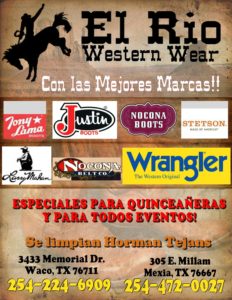 I confess I haven’t shopped for cowboy clothing since Go Texan Day in 4th grade, so I had a thing or two to learn when I walked into El Rio Western Wear at 3433 Memorial Drive. Cowboy tunes and the ringing of a landline were the soundtrack of my time with owner, Eduardo Martinez. Old fashioned reliability feels like it is baked into the walls of this place. One gets a thorough sense that the Martinez family knows what they are doing.
I confess I haven’t shopped for cowboy clothing since Go Texan Day in 4th grade, so I had a thing or two to learn when I walked into El Rio Western Wear at 3433 Memorial Drive. Cowboy tunes and the ringing of a landline were the soundtrack of my time with owner, Eduardo Martinez. Old fashioned reliability feels like it is baked into the walls of this place. One gets a thorough sense that the Martinez family knows what they are doing.
Eduardo’s voice is gentle and confident, a mixture of Texas twang with a memory of his family’s history. As we talked I thought, he’s someone who is going to shoot you straight — quick, and honest. Here’s a bit of what I learned…
Beth: So, what made you want to start El Rio Western Wear? What was the vision?
Eduardo: It was my parents who started it. They actually started selling statues. Then, they moved to women’s clothing and then after that kinda died down, they started selling men’s clothing and then boots, and – that’s kinda where it all started, from them tryin’ to provide a little bit of income. I’ve been working with them since I was small, since I can remember.”
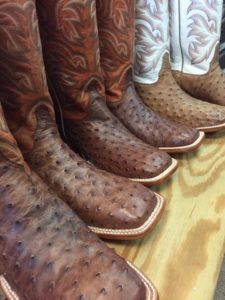 They started selling those statues maybe in 2003? And they moved to the boots and the hats in 2004-2005. And, we’ve been doing it ever since. We started selling at the flea market and things, you know, got good, and we actually opened a brick and mortar store in 2006.
They started selling those statues maybe in 2003? And they moved to the boots and the hats in 2004-2005. And, we’ve been doing it ever since. We started selling at the flea market and things, you know, got good, and we actually opened a brick and mortar store in 2006.
We just moved over here last August. The new location is probably double the size of the old one.
Beth: So, you grew up watching your parents run the store. What made you want to be a part of this?
Eduardo: (Tilting his head, searching for an answer…) I don’t know! I’m just kind of used to it. I’m the only one of my siblings that actually, I guess, actually got into it — into the business. I saw the success…and, I just wanted to continue what they started.
They actually started in Houston, but that store failed. We had family members here and they decided to give it a shot here and that’s how it grew.
Beth: Can a customer get exactly what they want?
Eduardo: We try to keep most things in inventory, try to be different from Cavender’s. We do carry major brands – Cinch and all that, Ariat and all that. And we try to stay competitive. We try to keep in competition with Ritchie’s…
Beth: Who’s your clientele?
Eduardo: It’s a little bit of everything. Right now it’s a middle-aged, older crowd. We’re trying to get a little bit of that younger crowd to take an interest in the cowboy outfit, stuff like that.
Beth: I love hearing the history of the store, Eduardo. In terms of being a part of a local business in Waco, do you like being in Waco? And, if so, why do you like being a part of this economy?
Eduardo: Well, coming from Houston, which was a bigger city, Waco gave me more opportunity – for me to grow as a person, get involved with a lot more people, get personal, you know?
I grew up here – well, my teenage years, I grew up here – and because of the business, I’ve come to know a lot of people. You know, I go out to eat – I’m gonna know somebody, at least. Which, in Houston, that’d probably be way different.”
I like that about Waco: it’s not too big, not too small. Right between Dallas and Austin. I mean, you can easily go up there and come back. But as a community, I think I like it more than I would’ve Houston.”
Beth: On a personal level, as business owners in Waco, what’s been your greatest obstacle?
 Eduardo: Trying to get new customers. Trying to get the new traffic flowing through here. Because, like I said, it’s a small town. So, if everybody has the same thing…”
Eduardo: Trying to get new customers. Trying to get the new traffic flowing through here. Because, like I said, it’s a small town. So, if everybody has the same thing…”
New inventory. Fresh! And sizes. I think that would be one of the challenges that we have. Trying to get new faces, trying to get new things in the store.”
Beth: How do you know if you have new customers coming in?
Eduardo: I’m here five to eight hours almost every day. I know what faces run through here all the time and which faces are new. This is basically my second home; I spend more time here than I do at my house!
I would know who comes here as a regular and who doesn’t.
Beth: What’s something you think would be surprising for people to find out about you or your business?
Eduardo: I guess…that I’m still learning. We’re still learning. I’m always tryin’ to learn – everything – new styles, new trends…”
Beth: So, El Rio, you are the fashion experts?
Eduardo: Well, we have to be attentive of what’s going – what’s in style, what’s hasn’t been in style, what’s going out of style, what’s still trending… We have to have something that’s there for people to buy, because if it’s not what they’re looking for, we’ll go out of business.”
Corporate clothing stores employ buyers whose only job is to stock up on relevant goods. For a shop like El Rio, the owner wears that hat. When clients come in, and they’re looking for something specific, Eduardo is the one who did the research. His clients benefit from all of his knowledge. El Rio Western Wear is waiting for you to reap its local benefits. Swing on by!
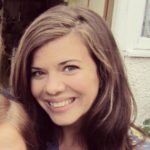 Beth Whittington remembers sitting on the Waco suspension bridge as a girl, visiting family friends. Legs dangling off, watching the Fourth of July fireworks spark the sky. Been a Waco local for the better part of 19 years. Gaps explainable by the awkwardly untrue term of “ex-missionary” 🙂 Beth thrives on: generating ideas + copywriting. Can’t wait to: visit South Africa. Favorite part of Waco: Bangkok Royale + the HOTHTC. Wants: everyone in Waco to get Towny because it’ll make life better for us all if we let it.
Beth Whittington remembers sitting on the Waco suspension bridge as a girl, visiting family friends. Legs dangling off, watching the Fourth of July fireworks spark the sky. Been a Waco local for the better part of 19 years. Gaps explainable by the awkwardly untrue term of “ex-missionary” 🙂 Beth thrives on: generating ideas + copywriting. Can’t wait to: visit South Africa. Favorite part of Waco: Bangkok Royale + the HOTHTC. Wants: everyone in Waco to get Towny because it’ll make life better for us all if we let it.
Take your local support up a notch – pop in Towny + have a look around.
The Act Locally Waco blog publishes posts with a connection to these aspirations for Waco. If you are interested in writing for the Act Locally Waco Blog, please email [email protected] for more information.
Read Locally Waco is a project to promote literacy in Waco. Throughout the semester we will post stories that use sight words our children are learning in Waco ISD. You can print these stories and lists of words to use with your children or with other children in your life. This week’s story uses words from the First Grade Sight Word List. For a printable version of this story and word list, click here: The Boy With Two Hearts.
The Boy with Two Hearts
One day in May a baby boy was born quite late at night.
His sister came to meet him just as soon as it was light.
She checked him over carefully…she counted all his toes,
She peeked into his little ears and pinched his little nose.
“This baby seems just fine,” she said. “I give him my OK.”
So, they put him in the car, and brought him home that very day.
But when they got her brother home, she soon began to wonder…
“Was bringing this kid home with us a big, enormous blunder?”
Sometimes he gurgled, laughed and smiled and acted like he loved her.
Then other times he cried and screamed. He was a little monster!
She thought, “There must be something that I missed in my inspection.”
“I will study him more carefully … this problem needs correction.”
She poked his fat. She stretched his legs. She could not see her error.
Why did this boy switch back and forth from “cutie pie” to “terror?”
She tried to ask her mom and dad, but they were tired and busy.
“I really need some help,” she thought. “I’ll go ask Doctor Lizzie!”
Doctor Lizzie listened carefully. She checked the baby’s charts.
Then she said, “I hate to tell you this…your brother has two hearts.”
“One heart is good and full of love, sweet as a jelly bean.
The other is a selfish heart. It can be downright mean.”
“A baby brother with two hearts will be hard work for you,
But, if you think you’re up to it, I’ll tell you what to do.”
The Sister stood up straight and tall, a brave look in her eye.
“I’ll do whatever I must do to help this little guy!”
“Ok,” said Doctor Lizzie. “Here’s the thing you need to know.
You must give him extra goodness, so that his Good Heart can grow.”
“He might be mean and nasty; he might act just like a pig,
Still, you must treat him kindly, so his Good Heart will get big.”
“He will sometimes make you angry; you won’t understand his ways,
But hug him when he’s grumpy, and be nice on those bad days.”
“And if you do these things, my dear, you’ll see when he is taller,
That his Good Heart will get bigger, and his Mean Heart will grow smaller.”
The Sister thought this sounded…well… a little hard to take.
But, she decided she would try it for her baby brother’s sake.
When he cried she sang him lullabies and stroked his fuzzy head.
When he yelled, she felt like yelling back, but stayed polite instead.
And so, the years went flying by, as years will sometimes do,
And Sister saw that Doctor Lizzy’s crazy words came true.
Her brother wasn’t perfect, but he was a whole lot better.
He pitched a fit from time to time…but not so much that it upset her.
His Bad Heart had grown so tiny, he was hardly ever bad.
His Good Heart was now gigantic, and his goodness made her glad!
She was thinking of her brother, his two hearts, and their effects,
When she noticed Doctor Lizzy on a walk with her dog, Rex.
She called out, “Doctor Lizzy! Hey! How did you get so wise?
How did you know my brother had that extra part inside?
The Doctor grinned and winked and said, “I’m not so very smart.”
“I pulled a trick on you, my dear… All people have two hearts.”
First Grade Sight Words in this Story
- All
- Big
- Back
- Her
- Over
- This
- With
- Was
- Give
- Good
- Of
- Night
- Very
- Walk
- His
- Put
- Him
- Saw
- Help
- Day
- When
- Your
- Had
- Know
- Then
- Ask
- Why
 This Act Locally Waco blog post is by Ashley Bean Thornton, she has lived in Waco almost 20 years now. Far longer than she ever lived anywhere else. She likes to walk. If you see her out walking, honk and wave and say “hi!”
This Act Locally Waco blog post is by Ashley Bean Thornton, she has lived in Waco almost 20 years now. Far longer than she ever lived anywhere else. She likes to walk. If you see her out walking, honk and wave and say “hi!”
The Act Locally Waco blog publishes posts with a connection to these aspirations for Waco. If you are interested in writing for the Act Locally Waco Blog, please email [email protected] for more information.
By Samantha Williams
“What do you want to be when you grow up?” How many times did you hear the question when you were five years old? When you were in High School? Sometimes we don’t achieve these lofty goals and that is okay!
Many of us have heard about the “grieving stage” regarding mental health conditions. Normally this is associated with the family members and the loved ones of those who have the mental illness. Whether it’s referring to the stress experienced providing care or finally reaching the realization that one dear to them may never accomplish the expectations of a normal life.
Less often does one hear of the grief experienced by the actual individual living with the condition. While it’s unclear if this is due to shame or disappointment, it is a very real aspect of any chronic ailment and mental illness is no exception of this.
Personally, I have kept what I feel to be the most discouraging facet of my condition to myself. I hate feeling like a burden to others and, frankly, I feel embarrassment when I give the subject thought. I am approached more often by former school mates that are asking after my wellbeing and what I have done since graduation than I’d like. I consistently flounder when I’m in the spotlight of those who were my peers during my teen years. Nearly all of them went off to college, landed prestigious jobs, and are proud parents to wonderful children while comparably I have stagnated, stayed in my hometown and often struggled with even going grocery shopping. How can I even begin to explain something like this when I sometimes labor to share something as mundane as my current emotion?
Due to medical limitations many of us living with mental illness find we are often unable to achieve lifelong aspirations. For some the cause can be the crippling anxiety that prevents them from pursuit of college education, the inability to cope with crowded places, and/or the disabling lack of confidence in ourselves.
Sometimes there is a profound remorse surrounding the perceived hardship our “failure” places upon our loved ones. We avoid discussing it and forgo the cathartic experience that often accompanies sharing our troubles. If sharing your personal grief is something that you have felt conflict about, I strongly encourage you to reach out. Holding in what we perceive as short-comings can fester within, inciting other hardships associated with mental illness to come forward.
It is extremely important to pause and take inventory of your accomplishments. Despite my own chafing and impatience at performing exercises like deep breathing or meditation, I have found this small activity to be more uplifting than I thought I would.
Gather up a pen and some paper. Ask yourself “What have I done that I am proud of today”? If one of your answers is along the lines of actually getting dressed or brushing your teeth, don’t be discouraged. I sometimes count myself lucky to get out of bed some days.
Follow up the first question with “What have I done that I am proud of this week?”
Next question- “…this month?”
And finally “What have I done that I am proud of this past year?”
Remember it is very important to take time to acknowledge how far you have come! You may not be working on your master’s degree or be the proud parent of an honor student, but you have likely come farther than you realize.
If you had asked me when I was in the thick of my worst depressive episode if I would be living in stability with my bipolar disorder, I likely would have laughed at you. While there are definitely setbacks, rough patches, and upsets in my life, I am profoundly appreciative to have come so far.
No matter where you are within your journey to living a satisfying life, the loss of your dreams are not the end. You are stronger than you know and are deserving of praise. The grief you experience in relation to your illness does not define you. It is not who you are as a person or reflective of how you will be for the rest of your life.
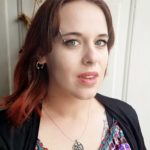 Samantha Williams, a Certified Peer Support Specialist, is proud to volunteer with NAMI Waco as a public speaker in local Middle and High Schools, and as a support group facilitator. With an ardent need to “pay forward” the kindness shown during the early stages of her bipolar disorder, she is extremely passionate regarding mental health conditions. She shares her home with a patient husband, three demanding feline roommates, and an ornery dog.
Samantha Williams, a Certified Peer Support Specialist, is proud to volunteer with NAMI Waco as a public speaker in local Middle and High Schools, and as a support group facilitator. With an ardent need to “pay forward” the kindness shown during the early stages of her bipolar disorder, she is extremely passionate regarding mental health conditions. She shares her home with a patient husband, three demanding feline roommates, and an ornery dog.
The Act Locally Waco blog publishes posts with a connection to these aspirations for Waco. If you are interested in writing for the Act Locally Waco Blog, please email [email protected] for more information.
(During these last few weeks of December we will be reprising the Top 10 Most Opened Blog Posts for 2018 from the Act Locally Waco blog. I couldn’t possibly pick my favorites – so I used the simple (cop out?) approach of pulling up the 10 blog posts that got the most “opens” according to our Google Analytics. It is an intriguing collection that gives at least a little insight into the interests and concerns of Act Locally Waco readers. I hope this “Top 10” idea inspires you to go back and re-read your personal favorites. There have been so many terrific ones… If you would like to see the Top 10 according to Google Analytics, here’s the link: Top 10 Most Opened Blog Posts of 2018. Merry Christmas! — ABT)
By Karen Rios
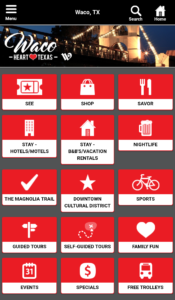 I became a Wacoan in January. Before that I literally only knew the Fazoli’s off of 35. I excitedly used my phone to explore my new home. However, I quickly got frustrated at all the articles and blogs that popped up on my search. Most revolved around Magnolia Market, and I knew that Waco had more than just the Market.
I became a Wacoan in January. Before that I literally only knew the Fazoli’s off of 35. I excitedly used my phone to explore my new home. However, I quickly got frustrated at all the articles and blogs that popped up on my search. Most revolved around Magnolia Market, and I knew that Waco had more than just the Market.
I really want people to know about an app that helped me learn about my new town. It’s called Waco & The Heart of Texas, and it’s free for Apple and Android. The Waco Convention & Visitors Bureau put together it together mostly for tourists, but I decided to give it a try anyway.
Savor
 I love food! So, the first area I explored was the “savor” category. The app lists 141 food options. Through this, I discovered World Cup Cafe & Fair Trade Market, a locally owned business where you can eat with a purpose. I love their club sandwich. It’s a double decker with ham, turkey, bacon, American cheese, lettuce, tomatoes and your choice of condiments. Did I mention it comes with fries?
I love food! So, the first area I explored was the “savor” category. The app lists 141 food options. Through this, I discovered World Cup Cafe & Fair Trade Market, a locally owned business where you can eat with a purpose. I love their club sandwich. It’s a double decker with ham, turkey, bacon, American cheese, lettuce, tomatoes and your choice of condiments. Did I mention it comes with fries?
 Next, the app’s food list led me to Butter My Biscuit. If you see day old biscuits still available, just go ahead and buy them. They sell out fast! The two main biscuits to choose from are Buttermilk and Texas, which has jalapeño and cheddar cheese. They also offer the biscuit “of the day”, which was Rosemary when I went. Every day is something different. You can’t go wrong with these biscuits!
Next, the app’s food list led me to Butter My Biscuit. If you see day old biscuits still available, just go ahead and buy them. They sell out fast! The two main biscuits to choose from are Buttermilk and Texas, which has jalapeño and cheddar cheese. They also offer the biscuit “of the day”, which was Rosemary when I went. Every day is something different. You can’t go wrong with these biscuits!
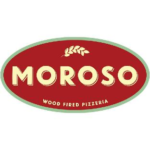 Finally, I enjoyed Moroso’s options for Neapolitan wood-fired pizza and other Italian dishes. A good margarita pizza is hard to come by, but Moroso’s hits the mark. The crust is crunchy and light. They put the right amount of sauce and cheese, and the basil tastes like they just picked it from the garden. It’s a good size pizza, most people share, but I think it’s a perfect personal size. I normally go during lunch to take advantage of their margarita pizza special. My mouth is watering just thinking about all this food.
Finally, I enjoyed Moroso’s options for Neapolitan wood-fired pizza and other Italian dishes. A good margarita pizza is hard to come by, but Moroso’s hits the mark. The crust is crunchy and light. They put the right amount of sauce and cheese, and the basil tastes like they just picked it from the garden. It’s a good size pizza, most people share, but I think it’s a perfect personal size. I normally go during lunch to take advantage of their margarita pizza special. My mouth is watering just thinking about all this food.
Waco offers a variety of food options with Wacoan pride. As a local you may already know of the restaurants listed, but it’s always good to have something to reference in case you forget or need to share with friends or family from out of town. The app provides all the information you need. The hard part– deciding where to eat.
Other categories to explore
Perhaps you want something other than food. The app offers 15 different categories to help you show off Waco.
In the “See” category I discovered Cameron Park Zoo. My niece and I watched the lioness chase her cub around trying to bathe her. It looked like the scene from “Lion King” when Simba was trying to get out of his “bath time.”
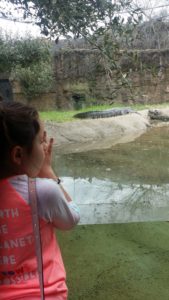 One of their unique exhibits includes The Brazos River Country. The exhibit shows you the journey of the early Spanish explorers who searched for gold along the Brazos. Throughout the exhibit you see different species that they could have encountered along the River. My niece enjoyed it because the river runs through Waco and we even walked around to see if she spotted anything.
One of their unique exhibits includes The Brazos River Country. The exhibit shows you the journey of the early Spanish explorers who searched for gold along the Brazos. Throughout the exhibit you see different species that they could have encountered along the River. My niece enjoyed it because the river runs through Waco and we even walked around to see if she spotted anything.
Another of my go to categories is “Events.” You can see what events happen around Waco. For instance, on May 4th I saw First Friday Waco. That is an event on the first Friday of every month, where business in downtown offer discounts, live music and extended hours. I even learned the Dr. Pepper Museum has free admission on First Friday.
There are at least 300 listings, you just pick a category and go through the options. The app provides a brief description of the place, their website, other media outlet platforms, a contact number, and the address. If you come across an event you like you can add that event to your Google Calendar or iCal. The app is easy to navigate. They did all the work for us, so all we Wacoans have to do is plan out the day.
Specials
 I love being able to save money anytime I can, but I absolutely hate having to give my email address in exchange for coupons! I liked that Waco & The Heart of Texas didn’t make me input my email address to get their Specials. On their app they provide at least 54 different coupons that Wacoans can use. (Side note: If you prefer paper coupons, you can find them at the Visitors Center at the Texas Ranger Hall of Fame Museum, or at the Convention Center.
I love being able to save money anytime I can, but I absolutely hate having to give my email address in exchange for coupons! I liked that Waco & The Heart of Texas didn’t make me input my email address to get their Specials. On their app they provide at least 54 different coupons that Wacoans can use. (Side note: If you prefer paper coupons, you can find them at the Visitors Center at the Texas Ranger Hall of Fame Museum, or at the Convention Center.
When my niece and I went to Cameron Park Zoo we used the coupon at least twice. The coupon gives you a free child admission with a purchase of an adult admission. I saved $7 dollars. You can keep using the coupons until December 31, 2018. Sure, it’s meant for tourists, but Wacoans can save money too.
Why should tourists have all the fun?
Wacoans can all benefit from this media platform. It provides a lot of options that you may know but not necessarily remember. You can plan a family outing and even save money. You can go on new bike trails. You can discover Waco history. You can provide more options to your friends and family. You can explore Waco in a different way. You can take advantage of the bus routes. You can try going to a winery. With over 300 listings, you are bound to find at least one new activity. Waco & The Heart of Texas might have been created for tourists, but Wacoans will know how to use it better! (Free for Apple OR Android )
 Karen Rios is a new Wacoan. She is currently attending MCC studying Digital Media. Although she is new to Waco, she is not new to the “small town” living. She loves exploring new towns and cities. She’s a sucker for hole-in-the-wall eateries. “Every day I discover something new about Waco, I realize how much beauty is here,” she says. “I like to brag about the scenery to all my city friends and family. I’m loving every minute of being a Wacoan.”
Karen Rios is a new Wacoan. She is currently attending MCC studying Digital Media. Although she is new to Waco, she is not new to the “small town” living. She loves exploring new towns and cities. She’s a sucker for hole-in-the-wall eateries. “Every day I discover something new about Waco, I realize how much beauty is here,” she says. “I like to brag about the scenery to all my city friends and family. I’m loving every minute of being a Wacoan.”
By Kelli McAdams
Our Community Our Future (OCOF) was started in the Fall 2015, when Klaras Center for Families (KCF), the child and adolescent division of Heart of Texas Region MHMR, helped to organize a committee of community stakeholders to look at the needs of children and adolescents in our community.
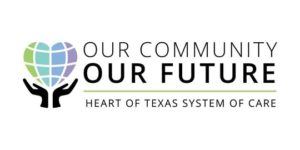 Our initial goal for OCOF was to identify gaps in services and to work with community partners to meet those identified needs. In an effort to help meet some of the needs identified, we at KCF applied for grant funding on behalf of the OCOF committee. We were awarded the grant and received $3.4 million for an initiative called “Closing the Gaps” through the Substance Abuse and Mental Health Services Administration (SAMHSA). The mission of Closing the Gaps is, “to provide access to previously inaccessible services and supports for our community’s most at-risk youth in order to enhance opportunities and improve outcomes for future success.”
Our initial goal for OCOF was to identify gaps in services and to work with community partners to meet those identified needs. In an effort to help meet some of the needs identified, we at KCF applied for grant funding on behalf of the OCOF committee. We were awarded the grant and received $3.4 million for an initiative called “Closing the Gaps” through the Substance Abuse and Mental Health Services Administration (SAMHSA). The mission of Closing the Gaps is, “to provide access to previously inaccessible services and supports for our community’s most at-risk youth in order to enhance opportunities and improve outcomes for future success.”
There are three main targets for the funding of this four-year grant:
- School Based Mental Health
- Transition Age Youth (TAY)
- Crisis Respite for Youth
Here are some examples of how we are using the grant funds…
School Based Mental Health – Through OCOF, we have been able to place counselors and case managers on location at schools in the area. This makes it possible to provide the children and adolescents with the most intensive mental health needs with the care they need with minimal disruption to their school day. Quick and easy access to a counselor or case manager during times of crisis allows for immediate collaboration with school staff to best meet the student’s needs. We are currently on 25 campuses and are serving at least 125 students.
Transition Age Youth – Transition Age Youth (TAY) are individuals ages of 18 to 22. Our grant allows us to provide people in this age range with mental health services and additional support for life skills, education, and employment. Currently we are serving around 30 individuals.
Crisis Respite for Youth – Crisis Respite is a service that is much needed in our community. This means providing a temporary place to stay for young people who need something other than a juvenile placement, CPS placement, or psychiatric hospitalization. For example, Crisis Respite is needed for …
- children in mental health crisis
- homeless youth in crisis
- victims of human trafficking
- CPS youth in need of respite
- other similar situations.
Klaras Center for Families is currently in the process of finding a facility that will serve as the Crisis Respite. It is our plan to have our facility function much like a residential home environment instead of a sterile hospital-like setting.
What are we doing in the future? OCOF’s future plans include expanding our community partners, adding additional school partners, applying for grants to expand our TAY program, and opening our Crisis Respite Facility in 2018. Above all, we want to continue filling gaps in services for children, adolescents, youth, and young adults in our community.
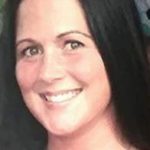 Kelli McAdams works for the Heart of Texas Region MHMR, as a Licensed Clinical Social Worker. She has been with the child and adolescent division of MHMR, Klaras Center for Families, for the last 10 years, most recently as Child and Adolescent Crisis Respite Program Director. As part of Our Community Our Future, I am the Social Marketing Lead, and have the pleasure of sharing what the local system of care is doing to fill the gaps in services, in our community. For more information about collaborative efforts like “Our Community, Our Future” in the Waco community, please visit the Prosper Waco website – www.prosperwaco.org.
Kelli McAdams works for the Heart of Texas Region MHMR, as a Licensed Clinical Social Worker. She has been with the child and adolescent division of MHMR, Klaras Center for Families, for the last 10 years, most recently as Child and Adolescent Crisis Respite Program Director. As part of Our Community Our Future, I am the Social Marketing Lead, and have the pleasure of sharing what the local system of care is doing to fill the gaps in services, in our community. For more information about collaborative efforts like “Our Community, Our Future” in the Waco community, please visit the Prosper Waco website – www.prosperwaco.org.
he Act Locally Waco blog publishes posts with a connection to these aspirations for Waco. If you are interested in writing for the Act Locally Waco Blog, please email [email protected] for more information.
By Chelsea Phlegar
May is National Bike Month! According to the League of American Bicyclists, National Bike Month was established in 1956, and is a chance for communities across the country to showcase the many benefits of bicycling — and encourage more folks to giving biking a try!
Fostering bike culture and expanding opportunities for bicyclists in Waco is important for a lot of reasons: riding a bike is cheaper than driving a car, and a bike is sometimes the primary mode of transportation for those who don’t have access to or can’t afford a car; riding a bike promotes individual health; bicycling instead of driving helps to reduce emissions and preserve clean air in our community; and exploring our community by bike is a way to discover the hidden gems in Waco that you may otherwise miss while driving a car. Whenever a person chooses to ride their bike they potentially free up a parking spot for someone else. That is Waco Friendly!
Last year, the Waco Metropolitan Planning Organization (MPO) issued an online survey where we asked people to tell us about their transportation and travel habits. Unsurprisingly, when asked how they usually travel around town, over half (56%) of respondents answered “drive by myself,” as compared to 13% percent that answered “ride my bike.” However, when asked how they would prefer to get around, the percentage of car-based trips decreased substantially, and trips made primarily by biking (or walking) increased, such that the preference for driving, walking, and biking was fairly evenly split (between 25% and 27% each).
When we asked more detailed questions about survey respondents’ experience with biking as a mode of transportation (as opposed to recreation), it became clear that lots of Wacoans want to get on their bikes but are prevented from doing so, or are hesitant, for a few common reasons:
- They don’t know safe routes to ride
- There aren’t many bike lanes or bike paths that are separated enough from vehicle traffic to make them feel comfortable to ride (either by themselves, or with their families)
- And they don’t feel confident that people driving their cars will know how to share the road in a way that is predictable and safe for everyone
One way to tackle these concerns is to build out our community bike network, and expand education and safety materials, with the novice bicyclist in mind. The novice bicyclist feels comfortable on lower-speed roads where motorists expect to see people on bikes, and prefers to be physically separated from cars when possible (such as buffered bike lanes and off-street bicycle/pedestrian paths or trails). The MPO is working on an Active Transportation Plan that will help to guide expansion of the bicycle network in the future. The plan will incorporate a lot of the feedback that was received from the online survey. However, in the meantime, here are some available resources that may help to address these common concerns:
I don’t know safe routes to ride! The MPO has developed a bicycle suitability index that is available online (here). This index rates arterial or collector streets in city limits (and several county roads) on a sliding scale, based on the potential level of comfort for a novice bicyclist. Rating levels include Easy, Moderate, Difficult, Not Recommended, Extreme, Under Construction, Prohibited, and Not Evaluated. Roadways in Waco city limits that don’t have a rating are usually “local” neighborhood streets, which are typically lower-speed, lower-vehicle-volume roads that may be comparable to an Easy or Moderate rating. The suitability index considers factors such as vehicle speed, traffic and truck volume, on-street parking, slopes/hills, land uses, etc.
There’s no place to bike! In McLennan County, we have 24 miles of bicycle infrastructure on the ground (including bike lanes, signed bike routes, and off-street multi-use paths such as the riverwalk and Cottonbelt Trail. The city of Waco has made a lot of progress over the past few years in expanding opportunities for biking in our community. For example, a new section of the riverwalk opened in late 2017, which means there is now a 5.5 mile continuous off-street loop for pedestrians and bicyclists along the Brazos River. Buffered bike lanes are available for use along Panther Way, and upcoming capital improvement projects will offer additional bicycle/pedestrian connectivity along Ritchie Rd and in the vicinity of Midway High School. In 2017, the City of Waco installed new bike route signs along University Parks and 11th/12th Streets. Also in 2017, the city was awarded two competitive grants to improve pedestrian and bicycle connectivity. The first will include upgrading the newly signed bike routes on 11/12th Streets to striped bike lanes (construction expected later this year). The second project will include bicycle accommodations starting at University Parks Drive, heading up the Washington Avenue Bridge, and up Elm Avenue to Forrest St. This will include a combination of bike lanes and shared lanes with pavement markings (sharrows), and construction is expected to start in 2019. The city is also exploring the possibility of starting a pilot bike share program.
I’m scared of the cars! The MPO has been working with the Waco Bike Club to develop or distribute educational materials focused on bike safety. However, this is an area that will require more focused effort in the near term. In the meantime, the city of Waco has applied for recognition as a Bicycle Friendly Community. As part of this application process, the city will receive advice on how to improve in areas such as education and safety training. However, one way that everyone can help is to build and promote bike culture in Waco. Bicyclists also drive cars too — so the more people we can encourage to get out there and ride their bike, the more informed drivers we will have on the road.
Another way to get more comfortable biking is to participate in a group ride. The Waco Bike Club is one organization that regularly sponsors these events and welcomes riders of all experience levels. You can check out their Facebook page (here), for upcoming events. Specifically for Bike Month, the Waco Bicycle Club is inviting you to participate in two events:
Ride of Silence, Wednesday May 16, 7 PM to 8 PM
Meet at the fountain in Heritage Square, View the event page on Facebook (here).
On May 16, Waco will participate in the national Ride of Silence ride to honor and remember those who have been injured or killed while cycling on public roadways in our community, and increase bike safety awareness. The Waco ride will include a stop at the White Bike on Franklin Ave to remember David Grotberg.
Critical Mass, Friday May 25, 6 PM to 7 PM
Meet at the fountain in Heritage Square, View the event page on Facebook (here).
Critical Mass is a community bike ride occurring on the last Friday of every month. Rides start downtown at the Heritage Square fountain (in front of City Hall) at 6:00 pm. Generally the ride is about 7 miles long (approx. 1 hour). In the past, Critical Mass rides have meandered along the Brazos, explored Elm Avenue, and cruised through Oakwood Cemetery. Critical Mass is open to riders of all experience levels, although children should be accompanied by an experienced adult. If you’re bringing your kids, we encourage you to practice riding before attending (more biking, yay!).
We hope that our pleasant spring weather and longer daylight hours motivates you to get out and ride your bike during Bike Month!
 Chelsea Phlegar, AICP, is a Senior Planner with the Waco Metropolitan Planning Organization. She also serves as the MPO’s active transportation coordinator, and spends her days working to improve multi-modal connectivity in McLennan County. On the weekends you can find her snacking her way through the Waco Downtown Farmers Market or “running” along the riverwalk.
Chelsea Phlegar, AICP, is a Senior Planner with the Waco Metropolitan Planning Organization. She also serves as the MPO’s active transportation coordinator, and spends her days working to improve multi-modal connectivity in McLennan County. On the weekends you can find her snacking her way through the Waco Downtown Farmers Market or “running” along the riverwalk.
The Act Locally Waco blog publishes posts with a connection to these aspirations for Waco. If you are interested in writing for the Act Locally Waco Blog, please email [email protected] for more information.
By Madiha Kark
 As a college student, staying engaged with coursework and campus life can seem intimidating if not impossible. But for a select group of students at MCC this engagement is a fundamental part of their educational experience, as well as their own core values.
As a college student, staying engaged with coursework and campus life can seem intimidating if not impossible. But for a select group of students at MCC this engagement is a fundamental part of their educational experience, as well as their own core values.
After a competitive application process, a select group of students are named Presidential Scholars each year at McLennan Community College. The students receive a full scholarship and spend the year volunteering around the community, sharing new ideas with campus administrators, and traveling around the country. We sat down with several of these students to learn more about their experience at MCC, and how it has been shaped by this program.
From the start, freshman Ethan Blanton emphasized the power of leadership when recounting his experience as a Presidential Scholar. At just 19 years old Blanton grounds himself daily with the responsibilities his position entails.
“Our number one responsibility is (to) know that we are representing our school. Whether it is at dinner with a speaker… we know the speaker is seeing MCC when he sees us.”
When I asked Blanton to describe his experience with a recent speaker, a grin spread across his face instantly. “Okay,” he said, “my absolute favorite speaker was Supreme Court Justice Clarence Brown. That was one of my favorite experiences in the program but also just in life,” he said sincerely, still maintaining a slight sense of disbelief that this moment had actually occurred. “I never would’ve had the chance to do this, to meet this wonderful man, unless I was in Presidential Scholars.”
Echoing this sentiment, sophomore Scholar Elijah Espinoja spoke of the rarity of these experiences and volunteer efforts. “There are certain experiences we have had here that not many people get,” he said humbly.
This advice has proved beneficial for Espinoja, who radiated a profound sense of both leadership and gratitude throughout the entirety of the interview. “Being involved in this program has opened so many doors for me,” he said while speaking of his own personal and academic experiences at MCC.
One of these doors opened after meeting an engineer at a Presidential Scholars event, when he was inspired to change his major to mechanical engineering. Even with this change Espinoja emphasized the stability he found on campus at MCC. “MCC is a great place,” he said, “everything about this school has been really good to me.”
So good in fact, that Espinoja has now inspired his younger brother to attend MCC and join him in the Presidential Scholars program. He expressed the importance of getting involved on campus, a trait that he seems to have been passed down to his brother Matthew.
“Getting involved anywhere is important,” he advised. “That is how you are going to succeed. You never know who you are going to meet… So do as much as you can, because the experience you get here is one of a kind.”
For freshman Seraphina Gayle, this sentiment of involvement resonated with her own experience throughout her first year at MCC. Gayle visibly lit up when discussing the role of other Presidential Scholars in her life.
“I think it’s important to be involved,” she said, discussing the friendships made through campus involvement. “A lot of times you can put your heads together and figure out what you want to change on campus.”
This people-oriented mentality seemed to be a theme throughout Gayle’s recollection of her time at MCC, but also has roots in the early days of her life. As a first generation college student, Gayle noted the importance of two fundamental people, her mother and father, throughout her educational career.
“For me (college) is something my parents haven’t done,” she said, “so we’re all figuring it out together.” When asked about her parents later she opened up about their impact on her college experience this far. “It definitely makes me more motivated,” she said candidly. “And college truly does have a meaning for me.”
Freshman Presidential Scholar Yuridia Navarro shares a similar story, as a first generation college student centered on motivation stemming from her own lineage. In every possible moment to glorify herself, Navarro managed to highlight the sacrifice and motivation from her parents as the explanation for her continued success.
“My parents came from Mexico for a better education for us and a better future for us,” she said of herself and her two younger siblings. “So them seeing me go to school for free fulfills the purpose of their struggle.”
When asked about the program’s application process, Navarro openly discussed her initial intimidation of the Presidential Scholars program. “I don’t even really remember the application,” she admitted sheepishly. “I just thought ‘this is Presidential; I am not worthy of this.’”
But soon this attitude was changed with the reception of the scholarship, and her concurrent experiences both on campus and around the community. “It makes me humble,” she said. “It makes me feel good giving back to my community because my community has given so much to me through MCC.”
And give back she plans to do, with a bright vision for a career in psychology after graduation. “I think about my family and how none of us have an education, and (how) I want to be that chain that breaks,” she said truthfully. Even with impressive accomplishments behind her and achievable goals ahead, Navarro still shifted the attention away from herself and towards others.
“I want to be a new generation,” she told me. “I want to be the motivation for my younger siblings.”
For each of these students, the sky seems to be the limit for both academic and professional success. But perhaps the most impressive factor linking each of them is the shared responsibility to make a difference; at MCC, around the community and even within their own households. Their deep sense of humility and focus on helping others is as prevalent as it is profound, as these four individuals succeed in inspiring all those around them.
 Madiha Kark is a Marketing, Communications and Photography Specialist at McLennan Community College. She holds an M.A. in Journalism from the University of North Texas. She loves to travel, cook, and read nonfiction books.
Madiha Kark is a Marketing, Communications and Photography Specialist at McLennan Community College. She holds an M.A. in Journalism from the University of North Texas. She loves to travel, cook, and read nonfiction books.
The Act Locally Waco blog publishes posts with a connection to these aspirations for Waco. If you are interested in writing for the Act Locally Waco Blog, please email [email protected] for more information.
By Hannah Byrd
In January of this year, I wandered into my first League of Women Voters meeting. I was pleased with what I found. Wacoans of different generations, political beliefs, and educational backgrounds gathered around a table to discuss how to improve voter participation and education in McLennan County. This is exactly what I had been searching for: an organization that unites citizens in the goal of protecting democracy. I became a student member of the League of Women Voters because I wanted to make positive political change that was non-partisan. In my few months of involvement with the League, I have learned important lessons.
First, more students should get involved with the League. According to The Center for Information and Research on Civic Learning and Engagement (CIRCLE), only 50% of eligible young people (ages 18-29) voted in the 2016 presidential election. This number is discouraging, but there is hope. CIRCLE found that young people who are registered to vote, vote in high numbers. One of the League’s main goals is to register voters to increase voter participation. I volunteered at the League’s registration drive in January. We registered someone who was celebrating his 18th birthday that day. It is exciting to help my peers become active political participants. Young people’s perspectives matter, but only if we express them through our vote. The League knows how important young people are to protecting our democracy. A student membership costs only $5 annually.
Second, I have learned the importance of local elections. At the League’s Candidate Forum in February, I listened to candidates running for local political offices explain their platforms. The candidates who win these offices will make decisions that impact everyone in McLennan County on an individual level. County Commissioners maintain our roads, the District Attorney prosecutes criminal cases, and the County Judge oversees the budget for county government operations. These are just a few examples of local elected officials and their responsibilities. Despite these offices’ important functions, local elections tend to have low voter turnout. A small number of eligible voters shape local policy for everyone. When more people vote in these elections, McLennan County becomes a community that works for everyone.
More voters in McLennan County participated in the recent midterm elections than in the past. To continue these positive changes, the League needs volunteers from a variety of backgrounds. Students can impact the future of their communities and country by becoming a member of the League. We can all help by participating in every election, local, state, and national. Our democracy works best when it reflects the will of the people. This can only happen if we do our part to become educated voters and help our neighbors do the same.
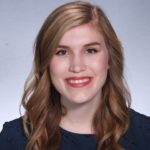 Hannah Byrd is a senior at Baylor University where she studies International Studies and Arabic and Middle East Studies. In addition to her involvement with the League of Women Voters, Hannah serves as president of Pursue Mentoring Organization, a Baylor service organization that seeks to empower at-risk middle school girls in Waco ISD. She likes watching matinees at the Hippodrome, spends too much time at Moody Library, and enjoys hiking in Cameron Park on sunny days.
Hannah Byrd is a senior at Baylor University where she studies International Studies and Arabic and Middle East Studies. In addition to her involvement with the League of Women Voters, Hannah serves as president of Pursue Mentoring Organization, a Baylor service organization that seeks to empower at-risk middle school girls in Waco ISD. She likes watching matinees at the Hippodrome, spends too much time at Moody Library, and enjoys hiking in Cameron Park on sunny days.
The Act Locally Waco blog publishes posts with a connection to these aspirations for Waco. If you are interested in writing for the Act Locally Waco Blog, please email [email protected] for more information.
By Larry Carpenter
“‘Cause a little bit of summer is what the whole year is all about’.” These lyrics from pop singer John Mayer’s song, “Wildfire,” ignite a spark of anxiousness as the end of the school year inches closer and the summer months draw near—especially for students who have worked hard in the classroom all school year long reading, writing, testing, and growing their minds and bodies.
As a student, I remember so vividly how the looming summer vacation from school would bring opportunities to be outdoors, attend summer camps, go to the swimming pool, or even just mow the lawn and smell the fresh cut grass. The length of the sunny days would unfold and give rise to something new and challenging everyday. And when the Texas heat grew too hot to be outdoors for long periods of time, it was important to have activities indoors to keep me occupied and engaged.
 That is where the Hawthorne Youth Center came into play for me. The HYC was a very small, community-based summer activity center in my old hometown. Owned by a local family, giving back to local kids was priority number one. Just a three-quarter mile bike ride from my front door, the HYC provided creative, athletic, educational, and social activities and events for youth of all ages. It was there that I not only learned the value of being part of a team, but I learned the value of social interaction, developing confidence to start conversations with others I didn’t already know. I enjoyed those summers at the HYC, and I was so very thankful that my school let the group promote their summer camp so that my family had the opportunity to let me go and grow.
That is where the Hawthorne Youth Center came into play for me. The HYC was a very small, community-based summer activity center in my old hometown. Owned by a local family, giving back to local kids was priority number one. Just a three-quarter mile bike ride from my front door, the HYC provided creative, athletic, educational, and social activities and events for youth of all ages. It was there that I not only learned the value of being part of a team, but I learned the value of social interaction, developing confidence to start conversations with others I didn’t already know. I enjoyed those summers at the HYC, and I was so very thankful that my school let the group promote their summer camp so that my family had the opportunity to let me go and grow.
It’s not very different for kids today. As we move closer to the close of the 2018 school year, students and their parents will be looking for activities to occupy their time in creative, fun, and educational ways.
In an effort to highlight many of the amazing opportunities available to families in the Waco area this summer, the Waco ISD Department of Student Services and Family Engagement is sponsoring a Summer Showcase on Saturday, May 5, 2018 at the Mayborn Museum from 9:00 a.m. to Noon.
Organizations, clubs, companies, and non-profits, among others will be sharing information about summer camps, student-centered activities, and other summer happenings at the Showcase. Whether you are looking for artistic outlets, growing a garden, developing leadership opportunities or just finding a way to keep cool in the summer heat—the Summer Showcase is the place to explore all your options. Many of the events and offerings are free or low-cost, and the Summer Showcase is a perfect time to find out what’s going on in our community this summer.
At the Cinco de Mayo themed event, families will enjoy food catered from George’s Restaurant, get free prizes from the various organizations represented, be entertained by a variety of activities and performances, and most importantly, get information on summer activities for youth of all ages.
The event is open to all of the Waco area community. It is never too early to see what’s happening in the community to help you make the most informed plans for the summer.
As the hard work of another school year comes to an end, it reminds me so fondly of my summers at the Hawthorne Youth Center and what a difference those experiences had in my life.
Waco ISD hopes to share some of those exciting opportunities to the community through the Summer Showcase! So, we hope to see you on May 5 at the Mayborn Museum from 9:00 to Noon!
Happy Summer everyone!
 Larry Carpenter is the Director of Fine Arts for Waco ISD. Having been with WISD for 18 of his 24 years in education, he has served WISD as a teacher, assistant principal, principal, assistant director of Advanced Academics and now Director of Fine Arts.
Larry Carpenter is the Director of Fine Arts for Waco ISD. Having been with WISD for 18 of his 24 years in education, he has served WISD as a teacher, assistant principal, principal, assistant director of Advanced Academics and now Director of Fine Arts.
